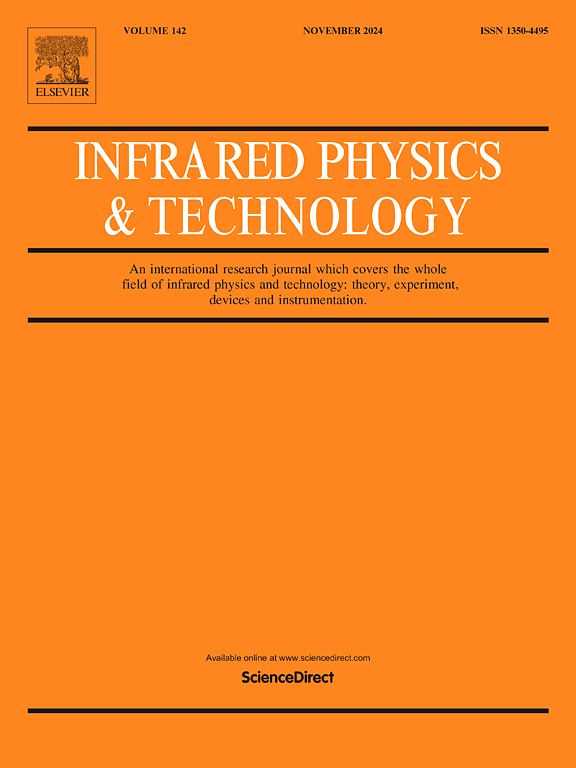MultiScale-enhanced detection network (MS-EDN) with dual encoder structure for infrared small target detection
IF 3.1
3区 物理与天体物理
Q2 INSTRUMENTS & INSTRUMENTATION
引用次数: 0
Abstract
Infrared small target detection is vital in military, security, and rescue operations. While deep learning has achieved remarkable progress in general detection frameworks, its application to infrared imagery remains constrained by intrinsic feature representation challenges. Existing methods are often affected by complex backgrounds, causing small targets to be overlooked, especially in low-contrast environments where detailed information is easily lost. This paper proposes a dual encoder network with multi-scale enhanced detection to address these challenges. One branch incorporates a feature residual enhancement module that combines a residual convolutional block attention module with a feature enhancement module for efficient feature extraction. The other branch integrates a dynamically parallelized patch-aware attention module and employs a multi-branch extraction strategy to capture information across various scales. The multi-scale dynamic fusion module in the neck layer enhances feature representation, facilitating accurate detection and localization of small targets. Additionally, soft pooling is used in the downsampling process to better preserve important features while reducing information loss. Extensive experiments on the SIRST dataset demonstrate that the proposed method outperforms existing approaches in effectiveness and robustness, effectively extracting small target information in complex backgrounds.
双编码器结构的多尺度增强红外小目标检测网络(MS-EDN)
红外小目标探测在军事、安全和救援行动中具有重要意义。虽然深度学习在一般检测框架中取得了显著进展,但其在红外图像中的应用仍然受到固有特征表示挑战的限制。现有的方法经常受到复杂背景的影响,导致小目标被忽略,特别是在低对比度环境下,细节信息容易丢失。本文提出了一种具有多尺度增强检测的双编码器网络来解决这些挑战。一个分支包含特征残差增强模块,该模块将残差卷积块注意模块与用于有效特征提取的特征增强模块相结合。另一个分支集成了一个动态并行的补丁感知注意力模块,并采用多分支提取策略来捕获不同尺度的信息。颈部层的多尺度动态融合模块增强了特征表征,便于小目标的准确检测和定位。此外,在下采样过程中使用软池可以更好地保留重要特征,同时减少信息丢失。在SIRST数据集上的大量实验表明,该方法在有效性和鲁棒性方面优于现有方法,可以有效地提取复杂背景下的小目标信息。
本文章由计算机程序翻译,如有差异,请以英文原文为准。
求助全文
约1分钟内获得全文
求助全文
来源期刊
CiteScore
5.70
自引率
12.10%
发文量
400
审稿时长
67 days
期刊介绍:
The Journal covers the entire field of infrared physics and technology: theory, experiment, application, devices and instrumentation. Infrared'' is defined as covering the near, mid and far infrared (terahertz) regions from 0.75um (750nm) to 1mm (300GHz.) Submissions in the 300GHz to 100GHz region may be accepted at the editors discretion if their content is relevant to shorter wavelengths. Submissions must be primarily concerned with and directly relevant to this spectral region.
Its core topics can be summarized as the generation, propagation and detection, of infrared radiation; the associated optics, materials and devices; and its use in all fields of science, industry, engineering and medicine.
Infrared techniques occur in many different fields, notably spectroscopy and interferometry; material characterization and processing; atmospheric physics, astronomy and space research. Scientific aspects include lasers, quantum optics, quantum electronics, image processing and semiconductor physics. Some important applications are medical diagnostics and treatment, industrial inspection and environmental monitoring.

 求助内容:
求助内容: 应助结果提醒方式:
应助结果提醒方式:


